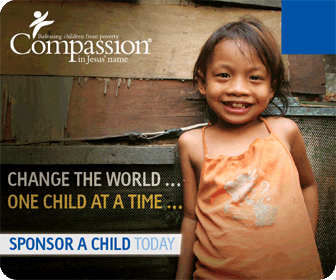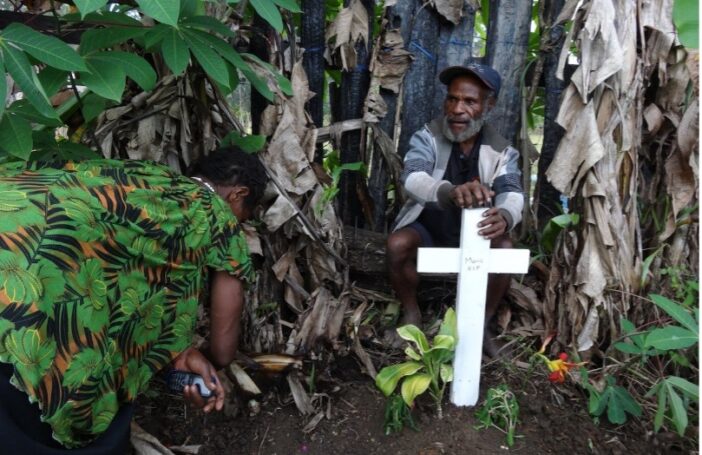A few years back I was surprised to discover that a couple of my old surfing buddies were sponsoring children in developing countries through child sponsorship programmes.
I didn’t have the heart to tell them but, within the development community, child sponsorship is – how shall we put it – rather uncool.
Uncool, because it’s a form of development assistance that is primarily driven by NGO marketing departments. It’s done, not because it’s thought to be the best possible way to tackle poverty, but rather because it’s one of the better available ways of prising open people’s wallets. As Stalin was supposed to have said “one death is a tragedy; 10,000 deaths is a statistic”. Similarly, in aid, when confronted by the chance to tangibly help one kid people are more likely to donate than if the plea for help is pitched to them in terms of funding lawyers to contest trade deals to shift GDP growth by 0.1%/annum.
However, just because something is uncool doesn’t mean it doesn’t work.
Via the blog of Lee Crawfurd I recently came across this [pdf], one of the first ever impact evaluations of Child Sponsorship. The paper hasn’t been published in a peer reviewed journal yet (it’s only a working paper) but it appears meticulous and well put together.
The abstract of the paper nicely summarises what they did and what they found:
International child sponsorship is one of the leading forms of direct aid from households in wealthy countries to needy children in developing countries, where we estimate that 8.4 million children are currently supported through formal international sponsorship organizations. In this paper we present results from a six-country impact study of Compassion International, a leading child sponsorship organization. Our empirical results are based on new household survey data that we collected from 10,144 individuals in Bolivia, Guatemala, India, Kenya, the Philippines, and Uganda. To achieve statistical identification of the causal effects of the program on the adult life outcomes of formerly sponsored children, we utilize an age-eligibility rule implemented as programs were introduced across different villages in the six countries from 1980 to 1992. More specifically, we compare sponsored children to their siblings who were more than 12 years old and thus could not participate in the program. Using household fixed-effects to control for family environment and inter-household selection into the program, and an instrumental variable based on sibling order relative to program rollout to control for intra-household child selection, we find that sponsorship results in 2.4 additional years of formal education, and large and statistically significant impacts on employment, occupational choice, age at marriage, age at child-bearing, dwelling quality, and community leadership. We also find evidence of positive spillover effects for many of these outcomes onto younger siblings and other village residents of the same age.
While the results section of the paper gives some further interesting food for thought:
We find child sponsorship to be a “great equalizer” in the sense that the educational impact on sponsored children across the six countries is driven largely by counterfactuals. In the countries where existing (counterfactual) levels of formal schooling were low, we find larger impacts of the sponsorship program than we do in countries where existing levels of education were already high. In places where schooling was higher among boys, we find larger program impacts on girls. Where it was higher among girls, we find larger impacts on boys.
We also uncover impacts on many other adult life outcomes in the six countries that are both large and statistically significant. Our OLS and instrumental variable (IV) estimates indicate that child sponsorship resulted in a 19.6 (32.6) percentage point increase, respectively, in the probability of secondary school graduation, with significant spillovers onto younger siblings, a 7.1 (17.3) percentage point increase in the probability of white collar employment, a 7.3 (8.0) percentage point increase in the probability of sending remittances back to the family. Moreover, marriage by age 20 fell by 4.9 (11.5) percentage points and female childbearing by age 20 dropped by 3.3 (11.8) percentage points. We also find significant increases in the probabilities of living in a house with electricity, with indoor plumbing, and with an improved floor in adulthood, as well as an increased probability of owning a cell phone and almost a doubling of the probability of being a church, community or village leader.
These are very significant findings, I think. Although there are also three points that need to be considered when evaluating them:
1. This may be a somewhat atypical child sponsorship programme in that quite a lot of the sponsorship does seem to be focused on individuals rather than communities which, despite what the ads suggest, are often – very sensibly – the focus of this sort of work.
2. These gains are statistically significant and significant in the real sense too (i.e. the magnitude of improvement’s is not to be sniffed at). However, they’re still not telling quite the same tale of inevitable transformation that Child Sponsorship organisations depict in their advertising.
3. The evaluation doesn’t answer perhaps the most important question about Child Sponsorship: is it better or worse than other NGO aid? In this study the counterfactual is no assistance, as opposed to a good ongoing NGO project that wasn’t designed with marketing in mind.
However, to tie this post back to my surfing buddies, I don’t think that in their case the counter factual was ever going to be donating to an impeccably scoped and designed ideal NGO project. Almost certainly had their consciences not been tugged by the evocative adds they would have kept their credit cards in their wallets, and not donated to anything.
So, in that sense, you’d have to say that – uncool or not – on the basis of the best available evidence child sponsorships come out looking quite good.
On the other hand…This is the second ever impact evaluation of a child sponsorship programme. Second. Ever. After all those years of people sponsoring kids. That’s appalling. What we really need now is an NGO that sponsors poor, orphan impact evaluations…
Terence Wood is a PhD student at ANU. Prior to commencing study he worked for the New Zealand government aid programme.






That’s right Terence, most NGO’s don’t provide a clear advertisement on the transformations that they create through child sponsorship. Every sponsor has the right to know what changes does their contribution makes to the orphan/un-privileged children and they must know.
Hope there still exists the NGO’s like ActionAid that are transparent to their sponsors providing the complete transformation.
Hi Terence,
Thanks very much for this blog. Did Roger Hodgson ever provide links to other evaluations of child sponsorship? Just looking at various Australian NGO programs and quite a few of them now seem to emphasise community development rather than focusing on an individual child (CARE, UNICEF, even Save the Children). Which I think makes more sense.
Do let me know if you’ve heard of more evaluations since your blog was released.
Cheers,
Joel
Thanks Joel,
Roger never replied – his comment appears to have been nothing more than a drive by shouting. Which is a pity, if there is more evidence I would love to know about it. Given the authors of the study I cited found almost nothing my guess is that there is almost nothing by means of proper impact evaluations on child sponsorship.
According to a commenter on my personal blog cite (link below) and on the basis of the paper it seems that the program studied really was literally child sponsorship in the traditional sense. Augmented with a bit of community development. As you say most agencies these days, as I understand it, even when they market work as child sponsorship tend to implement it as community development. And, I agree with you, this is likely a much more sensible approach. Although, I guess in the absence of readily available impact evaluations of this approach we’re left running on our intuitions rather than evidence. (With the caveat that there may be good evidence out there that I’m not aware of.)
Thanks again for your comment.
Link mentioned above is:
http://waylaiddialectic.wordpress.com/2012/03/30/child-sponsorship/#comment-798
Terence
Tapping into this post quite late, but I think it’s important and useful to add some extra commentary to this. Child sponsorship is not just unpopular in development circles because it is “uncool” – it is unpopular because it is unethical.
It feeds into ideas about poverty and development which are patronising to families and communities living in developing countries. How would you feel as a parent if some rich stranger off in a country you’d never been to ”bought”your child, because you couldn’t afford to support them yourself. Pretty demoralising and disempowering.
It also promotes the idea that we can ”buy” people’s way out of poverty (reinforcing the current global system of market capitalism), rather than recognising the root causes of that poverty, largely related to that very system.
And what about the children themselves? What do they think about these strangers supporting them in far off countries and sending over cards and gifts, sometimes even visiting? Are we promoting ourselves as ”saviours” to these children, creating unequal power dynamics as was done with colonialism in many instances, when really, we were just lucky to be born in a wealthy country where we have disposable income to spend on ”charitable” actions like this.
I suggest someone considers impact evaluations with some of these issues in mind – not just statistical calculations based on materials improvements.
I suggest some further reading too, for anyone interested in a broader look at the issues:
http://www.caritas.org.au/docs/about-us/can-we-end-poverty.pdf
Hi there Alex,
Thank you for your comment. I think you make a fair point: my colloquial ‘uncool’ does not do justice to the reasons that people have for opposing child sponsorship.
Nevertheless, I don’t think child sponsorship is unethical.
Following Utilitarian ethics, I think there is a case to be made for child sponsorship. It runs as follows:
1. Its direct effects, as per the study above, appear positive in terms of welfare outcomes.
2. I think that much of the money child sponsorship elicits is unlikely to have been donated to other aid work.
3. I do not think that NGO advertising has that much impact on how people in developed countries think about what causes poverty in developing countries. And that even if it did most people in developed countries still wouldn’t actually form a powerful untapped constituency that might bring about changes in developed country trade and foreign policy where they not being beguiled by child sponsorship adds. Rather I think that most developed country voters do not devote much thought to the causes of poverty in developing countries and are unlikely to vote on the basis of foreign policy — domestic policy is what’s real to them and that drives their voting.
4. I think that the major share of global poverty doesn’t actually stem from developed country foreign policy. (Although I do think we do a lot wrong and am always keen to see foreign policy improved.)
In short – while I think child sponsorship is an imperfect aid delivery mechanism, I think it is, on balance good because it gets money and services where it’s needed, which wouldn’t otherwise be devoted to helping people in developing countries, and with relatively few associated negative impacts.
Those are my thoughts though. Like your arguments they hinge on assumptions, and I am open to replacing them should you or anyone else be able to provide good evidence.
Thanks again for your comment.
Terence
Dear Roger,
Thank you for your comment and sorry for my delayed reply.
With respect to the numerous evaluations available can you please direct me to any publicly available impact evaluations of Child Sponsorships that you are aware of?
Kind regards and thank you again for your comment.
Terence
Mr Wood’s question on child sponsorship and its effectiveness seems founded on a very limited source of information (2 evaluations of child sponsorship), by his own admission. I have worked in the development field for more than 30 years, in a variety of organizations and countries, two of which operated child sponsorship. My experience is that child sponsorship is an invaluable way of helping children and their families and communities lift themselves out of poverty because the sponsor usually commits for a longer period of time (substantially more than an institutional donor – the more traditional form of NGO funding). This ensures the time to empower families and communities, and make sure interventions are sustainable and sustained. All my experience shows that long term interventions which empower people and take the time to learn and adapt interventions to be most effective, are an important factor in successful development. To see a six year old child enter school and then graduate years later is quite amazing. So while child sponsorship may be “uncool”, the fact is it works, and I would suggest works better than most other forms of NGO funding. Perhaps approaches have to be “uncool” to be a success? Lastly, back to My Wood’s complaint about the lack of evaluations. There are many evaluations of sponsorship programs out there – Mr Wood seems to have missed the trees for the wood (sic) and needs to get in the field and find them.